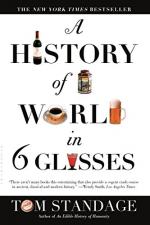
|
| Name: _________________________ | Period: ___________________ |
This test consists of 15 multiple choice questions and 5 short answer questions.
Multiple Choice Questions
1. When was Homer's Odyssey written?
(a) Sixth century BCE.
(b) Fourth century BCE.
(c) Seventh century BCE.
(d) Eighth century BCE.
2. For whom was the third Giza pyramid built?
(a) King Mentuhotep I.
(b) King Ramesses II.
(c) King Tutankhamun.
(d) King Menkaure.
3. The earliest physical evidence of wine production comes from red residue in a pottery jar that has been dated to approximately what year?
(a) 1200 BCE.
(b) 5400 BCE.
(c) 690 BCE.
(d) 2300 BCE.
4. The earliest written documents consist of what from the Ancient Sumerians?
(a) Poems and short stoies.
(b) Plays and novels.
(c) Epic hunting stories.
(d) Wage lists and tax receipts.
5. What were the first animals that were domesticated throughout the Fertile Crescent between 7000 BCE and 5000 BCE?
(a) Chickens and dogs.
(b) Cats and horses.
(c) Sheep and goats.
(d) Cows and pigs.
6. What Italian wine grown in the region of Campania was regarded the finest wine of all by the Romans?
(a) Falernian.
(b) Riesling.
(c) Sauvignon blanc.
(d) Chardonnay.
7. Who developed the printing press in the 1430s?
(a) Jabir ibn Hayyan.
(b) Michael Puff von Schrick.
(c) Johannes Gutenberg.
(d) Arnald of Villanova.
8. The author states in Part 1: "Beer in Mesopotamia and Egypt" that during the construction of the Ancient Egyptian pyramids, the standard ration for a laborer was three or four loaves of bread and about how many jugs containing around four liters of beer?
(a) Nine.
(b) Six.
(c) Three.
(d) Two.
9. The word "Rumbillion" was a slang word from southern England meaning what?
(a) A man.
(b) A horse.
(c) A carriage.
(d) A brawl.
10. Who is the Greek comic poet who is quoted in the opening of Part 2: "Wine in Greece and Rome"?
(a) Alexander the Great.
(b) Aristophanes.
(c) Plato.
(d) Sophocles.
11. What ship did John Winthrop take to America in 1628?
(a) The Lorry.
(b) The Arbella.
(c) The Mary.
(d) The Elizabeth.
12. In what is Sahti brewed?
(a) Hollowed-out trees.
(b) Seashells.
(c) Copper urns.
(d) Silver urns.
13. When did Richard MacRagh-naill die from overconsumption of alcohol?
(a) 1405.
(b) 1465.
(c) 1425.
(d) 1414.
14. When did the Boston Tea Party take place?
(a) 1773.
(b) 1771.
(c) 1770.
(d) 1775.
15. Where did Noah plant the first vineyard after being saved by the flood, according to the Bible?
(a) Mount Kilimanjaro.
(b) Mount Ararat.
(c) Mount Everest.
(d) Mount Shasta.
Short Answer Questions
1. In whose honor was Virginia named?
2. Approximately when did writing first begin to emerge in Sumer?
3. What was Prince Henrique of Portugal also known as?
4. Who is the god of wine in Greek mythology?
5. Who wrote Works and Days in the eighth century BCE?
|
This section contains 407 words (approx. 2 pages at 300 words per page) |

|




